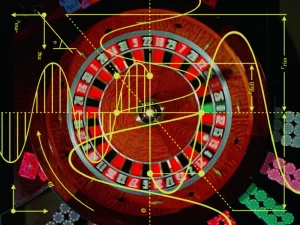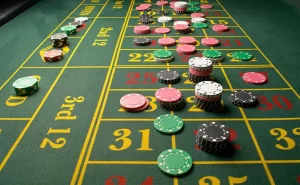
The spinning wheel. The clattering ball. That heart-in-your-throat moment of anticipation. Roulette is pure, unadulterated casino theater. But let’s be honest—for the casual player, it can also feel like a fast track to watching your chip stack vanish.
You’ve probably heard whispers of “guaranteed” roulette systems. The ones that promise to break the bank. Well, here’s the real deal: there is no magic bullet. The house edge is a stubborn fact of physics and probability. But that doesn’t mean you’re just a leaf in the wind.
Sustainable roulette play isn’t about winning big. It’s about playing longer, maximizing your fun, and walking away with your bankroll—and your dignity—intact. It’s a shift in mindset from hunter to… well, let’s call it a “leisure enthusiast.”
First, Let’s Talk About the Engine: Roulette Odds
You can’t have a strategy without understanding the playing field. Think of the house edge like a gentle, constant slope. Over a long, long time, everything naturally rolls downhill towards the casino. Your goal is to just stroll on that slope for a while, enjoying the view, without tumbling down.
| Roulette Type | Number of Zeros | House Edge |
| European Roulette | One (0) | 2.70% |
| French Roulette | One (0) | 1.35%* (with La Partage/En Prison) |
| American Roulette | Two (0 & 00) | 5.26% |
See that? The single zero in European Roulette is your best friend. It effectively halves the house’s advantage compared to the American double-zero wheel. And French Roulette? With its special rules that give you half your even-money bet back on a zero spin? That’s the holy grail for casual strategy. Always, always seek out these tables. It’s the easiest strategic decision you’ll ever make.
Bankroll Management: Your Secret Superpower
This is where most casual players trip up. They walk up to the table with their entire night’s entertainment fund and place it on a single, glorious bet. It’s cinematic, sure. But it’s also a one-way ticket to the ATM.
The 5% Rule and Session Budgeting
Let’s keep it simple. Before you even touch the felt, decide on your total bankroll for the session. Got it? Good. Now, your first rule is to never bet more than 5% of that total on a single spin.
If you sit down with $100, your max bet is $5. This isn’t a restriction; it’s liberation. It forces you to think, to be deliberate. It turns a potential five-minute disaster into a solid hour of engagement. You’re playing the long game, remember?
The “Walk Away” Number
Set two numbers in your head before you start: a win goal and a loss limit. A good, sustainable approach is to walk away if you double your money (a 100% profit) or if you lose 50% of your starting bankroll.
Hitting that loss limit is tough. Your brain will scream, “Just one more spin to win it back!” But that’s the siren’s call. Walking away with half your money is a strategic victory. It means you get to play another day.
Betting Strategies That Don’t Require a Math PhD
Okay, so you’ve got your bankroll locked down. How should you actually place your chips? We’re avoiding the complex, high-risk progression systems. Instead, think about coverage and consistency.
The Conservative Combo: Outside Bets with a Splash
This is a fantastically sustainable approach for casual play. You’re going to focus on the “outside” bets—the ones that cover large groups of numbers. We’re talking Red/Black, Odd/Even, 1-18/19-36. The payouts are small (1:1), but your odds of winning are just under 50% on a European wheel.
Here’s where you add a little spice. Place the bulk of your bet, say 80%, on an outside bet. Then, with the remaining 20%, make a “splash” bet on a single number or a small group of numbers you fancy. This does two things: the outside bet gives you a steady, low-risk return, while the splash bet keeps the dream of a big win alive. It’s the financial equivalent of eating your vegetables and then having a bite of cake.
Tiers & Orphans: A Mid-Range Approach
Feeling a bit more adventurous? The “Tiers du Cylindre” (Third of the Wheel) covers 12 numbers with a 2:1 payout. It’s a classic. You can combine it with the “Orphans” bet—another set of numbers not covered by the Tiers.
Honestly, the specific names aren’t as important as the concept: you’re covering a significant portion of the wheel (around 17-20 numbers depending on the combo) with a couple of coordinated bets. It’s a more engaging way to play than just red/black, and the 2:1 payout gives you a nicer little thrill when it hits.
The Mindset of a Sustainable Player
This, honestly, might be the most important section. Your brain is your biggest asset—and liability—at the roulette table.
Embrace the “Cost of Entertainment” Model
Reframe the entire experience. You’re not there to make money. You’re there to buy fun. That $50 bankroll? That’s not an investment; it’s your ticket for two hours of excitement, the same way you’d buy a movie ticket or go to a concert. If you walk away with anything left, it’s a bonus. This single mental shift removes the pressure and the desperation that leads to bad decisions.
Ignore the “Gambler’s Fallacy”
The wheel has no memory. It’s a beautiful, chaotic, random machine. If red has come up ten times in a row, the probability of it being black on the next spin is still, always, just under 50%. It is not “due.” Chasing patterns that don’t exist is like trying to predict the path of a single falling leaf in a storm. Let it go. Bet on what you like, not on what you think the universe owes you.
Putting It All Together: Your Casual Player Blueprint
So, let’s synthesize this. What does a sustainable session look like?
- Step 1: Find a European or French Roulette table. This is non-negotiable for better odds.
- Step 2: Set a firm bankroll and stick to the 5% max bet rule. Decide your win/loss limits before you play a single spin.
- Step 3: Choose a simple, low-pressure betting style. The Conservative Combo is a perfect starting point.
- Step 4: Play for the experience, not the outcome. Enjoy the social aspect, the suspense, the ritual. The money is just the token that lets you play the game.
Roulette, at its best, is a wonderful dance with chance. Sustainable strategies aren’t about controlling the dance; they’re about learning the steps well enough to enjoy the music without stumbling. They’re about making sure the game remains a light diversion, not a heavy burden. Because the most successful casual player isn’t the one who wins the most—it’s the one who enjoys the ride the longest, and leaves the table still smiling.








